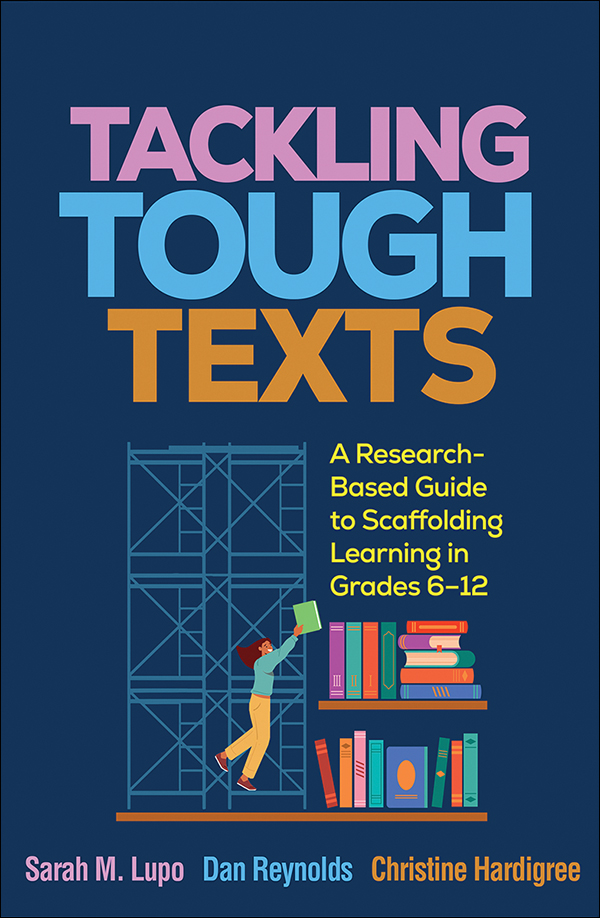Yes, Students Can Read Tough Texts. Here’s How to Scaffold Their Learning
How do you get kids to read—and actually understand—hard texts? Teachers know it’s important for students to read historical primary sources, scientific research studies, or literary texts with unfamiliar language, like Shakespeare or the Odyssey. Research also shows that adolescents need high-challenge, high-support environments.
But it’s not so easy: many lessons fizzle because teaching tough texts is...tough—and many secondary teachers feel unprepared to support students through texts’ challenges. We have been there—and have felt that way too. But we also know it’s possible. We began by asking why teachers find it so difficult to teach tough texts. And we realized that most teachers don’t understand why texts are hard. Understanding what makes a text difficult is the key to scaffolding learning.
So we wrote Tackling Tough Texts: A Research-Based Guide to Scaffolding Learning in Grades 6-12 to explain exactly what makes ELA, science, and history texts difficult—and and to explain how teachers can scaffold instruction to students can understand and learn from even the toughest texts.

How should teachers design content learning with tough texts?
In the book’s first half, we unpack comprehension and explain what makes texts difficult: dense ideas, high knowledge, complex text structure, unfamiliar vocabulary, and word reading challenges.
Next, we outline principles for designing ELA, history, and science instruction using text sets that align with what we know about readers’ comprehension processes. We showcase classroom-ready examples across the content areas to show step-by-step how teachers can craft text sets to unlock disciplinary learning, like using Shakespeare to teach postcolonial reading for 12th grade ELA, interrogating Indigenous histories for 8th grade and AP US history, managing dynamic ecosystems in the Great Lakes for 9th grade biology, and understanding spaceflight’s effects on humans for 6th grade science. All examples show how teachers can target engaging essential questions that prioritize disciplinary learning while building needed disciplinary literacy skills. We also advocate for using an asset-based framework to help teachers leverage strengths in their students’ linguistic, cultural, and even religious backgrounds.
How can teachers scaffold through the challenges of tough texts?
After identifying text challenges, we present a chapter dedicated to how to scaffold each of those challenges.
Dense ideas, background knowledge, and text structure: At the text level, the knowledge of the world and the complex ideas embedded in text present enormous challenges. As authors craft texts, they carefully organize ideas and knowledge. We show teachers how to guide their students to notice and analyze these deeper structures, knowledge, and ideas.
Vocabulary, syntax, and language: At the sentence and word level, tough texts are full of complex sentences, multiple-meaning words, and disciplinary language. We unpack these challenges and use our example text sets to provide concrete examples of scaffolds to surmount them.
Word reading and pronunciation: Secondary teachers are rarely trained in decoding and phonics—but students who struggle to read words aloud nevertheless show up in their classes. We advise teachers on how to employ ideas from scientifically based reading instruction to support students who struggle to accurately pronounce words.
What does it look like in the moment?
We know that even the best-planned scaffolds might Our closing chapter presents principles and examples to help teachers masterfully guide discussions even when students present unexpected challenges.
Using research to guide scaffolding through great text selection, lesson design, and live delivery, this book shows how all teachers can reach their ambitious content and literacy goals.
ABOUT THE AUTHORS:
Dr. Dan Reynolds (top right) is a senior education researcher at SRI International and former high school English teacher. His research examines all aspects of adolescent literacy, with particular focus on how to scaffold students' comprehension of complex texts, how to support adolescents' foundational reading skills development, and how to translate adolescent literacy research to practice.
Dr. Christine Hardigree (bottom left) is an associate professor and the chair of the Department of Education at Iona University. She teaches courses in introductory and advanced adolescent literacy. Her research focuses on literacy and language instruction among linguistically diverse populations.
Dr. Sarah M. Lupo (bottom right) is an associate professor in the College of Education at James Madison University. She teaches literacy courses for pre-service and in-service teachers and future reading specialists. Her research puts theory into practice to find practical ways teachers can improve literacy instruction for K-12 students.
